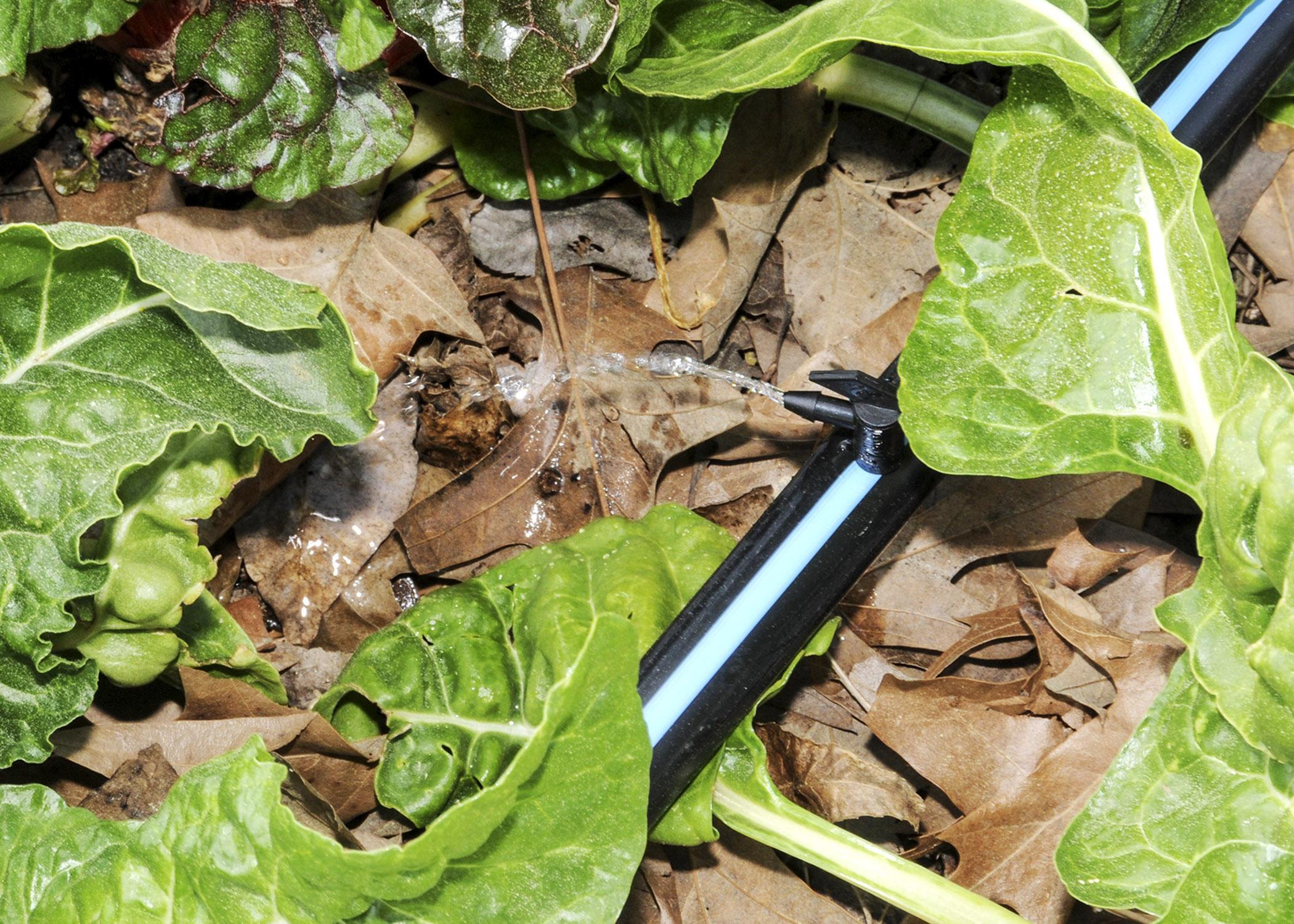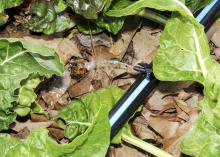Information Possibly Outdated
The information presented on this page was originally released on May 20, 2013. It may not be outdated, but please search our site for more current information. If you plan to quote or reference this information in a publication, please check with the Extension specialist or author before proceeding.
Plan now for later irrigation needs
Although many Mississippi gardeners are wondering if it will ever quit raining and let their landscapes dry out a bit, now is actually a good time to think ahead to the inevitable hot and dry weather of summer.
Dry conditions create problems for our home gardens and landscapes, and gardeners water their lawns and landscape beds a lot more than usual during these times.
We typically water garden plants based on soil moisture, and when the soil feels dry, we water thoroughly. A common recommendation is to apply 1 to 1.5 inches of water a week. This irrigation is usually done with overhead sprinklers, but they are an inefficient method of applying water.
A much better approach is to maintain soil moisture by slow and steady watering. Homeowners actually have a variety of options that can provide water more effectively and efficiently. One option is to use microirrigation, also called drip or trickle irrigation, to apply water directly to the root zones.
Maintaining a moist root zone reduces plant stress significantly. It also reduces water usage by up to 70 percent compared to overhead sprinklers. This can make a big difference in the monthly water bill.
Soaker hoses are another effective method of microirrigation. These hoses work by “sweating” along their entire length and are good for vegetable garden rows or long flower beds.
Drip tapes are somewhat similar to soaker hoses and are used for long and straight rows in vegetable gardens. Emitters create uniform and efficient water flow and come spaced from 1 to 3 inches apart to accommodate different plant spacing. Because water usage can vary between plants, adjustable flow emitters can regulate irrigation volume accordingly.
Microsprinklers are useful for wider areas. While these are overhead sprinklers, volume is limited to 10 gallons per hour.
If you are interested in really controlling the amount of water you use in the garden, consider using pressure-compensated emitters. These emitters regulate the amount of water regardless of water pressure.
Microirrigation is an effective method of watering plants grown in containers. Starter kits make systems easy to install and are available at home improvement stores and garden centers. You can easily add additional tubing and emitters to these systems to irrigate additional containers.
If you are like me and have an existing irrigation system that uses pop-up sprinklers, you can buy a conversion kit to switch to microirrigation. I did this in my front landscape beds.
The early-morning hours are the best time to water, as temperatures are cooler and the soil can absorb the water before the heat of the day. Watering during the middle of the day is not very efficient, as some of the water evaporates before it can do any good.
Plants, like people, have preferences and knowing when and how much to water plants is one skill all gardeners need to cultivate. Too much water encourages root rot problems; too little leaves plants wilted and lifeless. Careful observation and experience will keep your landscape plants alive during a long, hot and dry summer.
Soil conditions in the garden and landscape have a big impact on watering needs. Most gardens and beds can benefit from the addition of 3 to 4 inches of composted organic matter that will help improve drainage. Top that off with 2 to 3 inches of mulch to help the soil retain valuable moisture and keep temperatures down.
Even though there’s too much water right now, spend some time in your landscape and garden planning on the best way to meet your plants’ later moisture needs. This way, you’ll be able to keep your landscape looking beautiful regardless of the weather.










